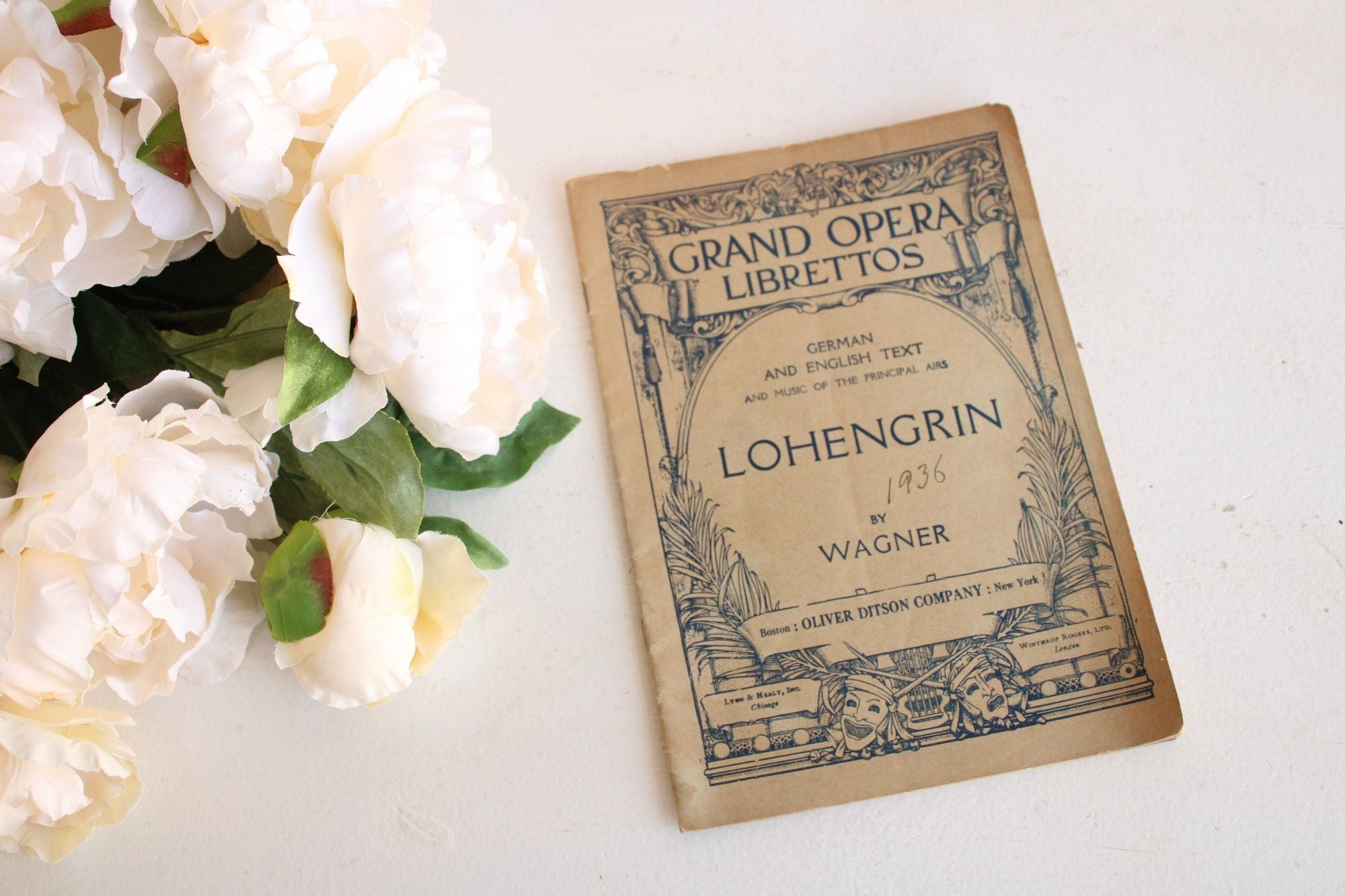Home>Events & Info>Opera>What Is The Story Of The Opera The Pearl Fishers


Opera
What Is The Story Of The Opera The Pearl Fishers
Published: January 7, 2024
Discover the captivating story of the opera The Pearl Fishers. Immerse yourself in the mesmerizing world of this enchanting opera filled with love, friendship, and sacrifice.
(Many of the links in this article redirect to a specific reviewed product. Your purchase of these products through affiliate links helps to generate commission for AudioLover.com, at no extra cost. Learn more)
Table of Contents
Introduction
The opera world is full of captivating stories and mesmerizing performances, and one such gem is “The Pearl Fishers”. Composed by Georges Bizet and first performed in 1863, this opera has secured its place in the annals of musical history. With its enchanting melodies, dramatic plot, and timeless themes, “The Pearl Fishers” continues to captivate audiences around the world.
Bizet, known primarily for his renowned opera “Carmen”, showcased his prodigious talent even in his earlier work, “The Pearl Fishers”. The opera tells the story of love, friendship, and loyalty against a backdrop of exotic locations and cultural traditions. It explores themes of jealousy, sacrifice, and the complexities of human relationships.
In this article, we will delve into the fascinating world of “The Pearl Fishers” opera. We will take a closer look at its background, synopsis, characters, themes, and the historical and cultural significance it holds. We will also explore the reception and legacy of this opera, which has stood the test of time.
So, join us on this journey to discover the story and secrets behind “The Pearl Fishers” opera, and get ready to immerse yourself in the rich tapestry of music, drama, and emotion that it has to offer.
Background of The Pearl Fishers Opera
“The Pearl Fishers” opera, or “Les pêcheurs de perles” in its original French title, was composed by Georges Bizet with a libretto by Eugène Cormon and Michel Carré. It premiered on September 30, 1863, at the Théâtre Lyrique in Paris, France. Though it did not originally achieve great success, it has since become one of Bizet’s most beloved works.
Set in ancient Ceylon (present-day Sri Lanka), “The Pearl Fishers” explores the themes of love, friendship, and sacrifice. The opera follows the story of two friends, Nadir and Zurga, who find themselves in a complicated love triangle when they both fall in love with Leïla, a priestess. Their once unbreakable bond is tested as they struggle to navigate their emotions while trying to maintain their friendship.
Bizet’s composition features a beautiful score that showcases his gift for melody and his ability to evoke emotion through music. From the hauntingly tender duets to the grand choral ensembles, the music of “The Pearl Fishers” is a testament to Bizet’s talent as a composer. It seamlessly weaves together Western classical conventions with exotic elements inspired by the setting, creating a rich and evocative musical tapestry.
The opera draws inspiration from the Romantic era’s fascination with exoticism, prevalent in the 19th century. It captures the allure of the East, with its vibrant colors, lush landscapes, and mysterious customs. This fascination with exoticism was also reflected in the prevalent Orientalist movement of the time, which sought to depict Eastern cultures through a Western lens.
Despite the initial lukewarm reception, “The Pearl Fishers” gained recognition following Bizet’s success with “Carmen”. Audiences grew more appreciative of Bizet’s earlier work, recognizing its musical brilliance and emotional depth. Today, “The Pearl Fishers” is regularly performed by opera companies worldwide, and its arias and ensembles remain beloved staples of the repertoire.
The background and origins of “The Pearl Fishers” opera provide a fascinating glimpse into the artistic climate and musical influences of the time. It is a testament to Bizet’s genius and his ability to create enduring masterpieces that transcend time and captivate audiences for generations.
Synopsis of The Story
The story of “The Pearl Fishers” opera revolves around the lives of two close friends, Nadir and Zurga, who have pledged eternal loyalty to each other. The plot is set in ancient Ceylon, where the friends work as pearl divers in a small fishing village.
The opera opens with a breathtaking chorus singing about the dangers and rewards of pearl diving. Nadir, overcome with nostalgia, recalls a forbidden love affair he had with a beautiful priestess named Leïla. He confides in Zurga, recounting how they both fell in love with Leïla and made a vow to renounce her so as not to destroy their friendship.
Years later, a veiled woman arrives in the village, and Nadir recognizes her as Leïla, the object of their forbidden desires. He learns that she has been chosen to serve as the village’s high priestess during a religious ceremony. Nadir immediately breaks his vow and decides to pursue Leïla once again, risking the wrath of both his friend and the village community.
As Nadir and Leïla passionately express their love for each other, Zurga spots them and becomes consumed with jealousy. At the same time, the village discovers the secret affair, and they demand that Leïla be sacrificed for breaking her vow of chastity.
Driven by his love for Leïla and remorse for his jealousy, Zurga devises a plan to save her. He sets fire to the village, creating a diversion that allows Leïla and Nadir to escape. Zurga stays behind and faces the consequences of his actions.
When the villagers discover Zurga’s involvement in the escape, they condemn him to death. Just as Zurga is about to be executed, Leïla, disguised as a priestess, pleads for his life, revealing her true identity. Touched by Leïla’s selfless act, Zurga realizes the depth of her love and forgives his friend for his betrayal.
In the end, Nadir and Leïla choose to leave together, while Zurga accepts his fate, sacrificing his own happiness for the sake of their love. The opera concludes with a powerful chorus, lamenting the tragic events that unfolded.
The story of “The Pearl Fishers” is a timeless tale of love, friendship, sacrifice, and redemption. Through its gripping narrative and emotive music, the opera explores the complexities of human relationships and the consequences of desire.
Characters in The Pearl Fishers
“The Pearl Fishers” opera features a small but impactful cast of characters, each playing a significant role in the unfolding drama:
- Nadir: The tenor protagonist, Nadir, is a pearl diver and the central focus of the story. He is impulsive, passionate, and torn between his love for Leïla and his friendship with Zurga.
- Zurga: The baritone, Zurga, is Nadir’s loyal friend and the leader of the pearl fishers. He initially agrees to renounce his feelings for Leïla to preserve his friendship with Nadir, but ultimately succumbs to jealousy and betrayal.
- Leïla: The soprano role, Leïla, is a priestess and the love interest of both Nadir and Zurga. She is torn between her duty as a priestess and her forbidden love. Leïla represents purity, beauty, and the catalyst for the conflict between the two friends.
- Nourabad: The bass, Nourabad, is the high priest in the village and serves as a guardian of the temple and its traditions. He is suspicious of outsiders and ultimately discovers Nadir and Leïla’s affair, leading to a tragic outcome.
These four primary characters form the core of the storyline, engaging in a complex web of emotions, love triangles, and conflicting loyalties. The interactions and relationships between Nadir, Zurga, and Leïla drive the plot forward, revealing the depths of their desires and the consequences of their actions.
It is through the compelling performances of these characters that the audience is transported into the world of “The Pearl Fishers” and becomes emotionally invested in their journey of love, friendship, and sacrifice.
Themes and Symbolism in The Opera
“The Pearl Fishers” opera explores several themes and utilizes symbolism to enrich its narrative and evoke deeper meaning:
- Forbidden Love: One of the central themes in the opera is forbidden love. The love shared between Nadir and Leïla challenges societal norms and tests the boundaries of loyalty and friendship.
- Friendship and Loyalty: The bond between Nadir and Zurga is a recurring theme in “The Pearl Fishers”. Their friendship is put to the test when they both fall in love with Leïla, showcasing the complexities and sacrifices that can arise in relationships.
- Sacrifice: Sacrifice is a prevalent theme in the opera, with characters willingly giving up their own happiness for the sake of others. Zurga’s ultimate sacrifice for Nadir and Leïla illustrates the power of selflessness and redemption.
- Jealousy and Betrayal: The opera delves into the destructive nature of jealousy and how it can lead to betrayal. Zurga’s jealousy towards Nadir’s relationship with Leïla drives him to betray his friend, leading to tragic consequences for all involved.
- Religion and Spirituality: As a priestess, Leïla embodies symbols of religious purity and spiritual devotion. The temple serves as a sacred space where rituals and traditions are celebrated and challenged, reflecting the clash between personal desires and societal expectations.
- Desire and Temptation: Throughout the opera, desire and temptation tug at the hearts of the characters. Their longing for love and their struggle to resist temptation add layers of tension and conflict to the story.
Beyond the themes, “The Pearl Fishers” opera incorporates symbolism to enhance its storytelling:
- Pearls: Pearls symbolize the preciousness of love, purity, and the hidden treasures of the heart. The pursuit of finding pearls mirrors the characters’ search for true love and the sacrifices they are willing to make to attain it.
- The Veil: The veiled figure of Leïla represents mystery, allure, and the hidden depths of her character. The unveiling of her true identity carries symbolic significance as it reveals her forbidden love and the ensuing conflict.
- Fire: Fire symbolizes both destruction and rebirth. The fire set by Zurga represents the destruction of the village and the breaking of traditions, while also paving the way for a new beginning for Nadir and Leïla.
- The Sea: The sea in “The Pearl Fishers” holds symbolic meaning, representing both the vastness of human emotions and the uncertain depths of desire. It acts as a backdrop to the characters’ journeys and the challenges they face.
These thematic elements and symbols intertwine to create a multi-layered narrative that explores love, friendship, sacrifice, and the complexities of human nature. They add depth and resonance to “The Pearl Fishers” opera, inviting audiences to reflect on universal themes and their own experiences of love and longing.
Historical and Cultural Significance
“The Pearl Fishers” opera holds both historical and cultural significance, reflecting the artistic and societal context of its time:
Historical Context:
“The Pearl Fishers” premiered in 1863, a period marked by political and social change in Europe. As the Romantic era gave way to the realism movement, artists sought to capture the essence of everyday life and explore themes of human emotions and relationships. Bizet’s opera exemplifies this transition, showcasing his ability to convey complex emotions through music and storytelling.
Cultural Influence:
The opera captures the fascination with exoticism prevalent during the 19th century. Inspired by Orientalist movements, it incorporates elements of Eastern culture and aesthetics, offering Western audiences a glimpse into the mysterious and enchanting world of ancient Ceylon. “The Pearl Fishers” reflects the cultural curiosity and exploration of the time, where Eastern cultures were seen as mystical and alluring.
Musical Innovation:
Bizet’s composition in “The Pearl Fishers” demonstrates his innovative approach to blending Western and Eastern musical elements. By incorporating exotic scales, melodies, and rhythms, Bizet sought to create an authentic and evocative portrayal of the opera’s setting. This fusion of musical styles broke new ground and served as a precursor to later developments in world music and cross-cultural influences in classical composition.
Challenging Love Triangle:
The unconventional love triangle depicted in “The Pearl Fishers” challenged societal norms and expectations. The exploration of forbidden love and its complications resonated with audiences of the time, reflecting the shifting perceptions of relationships, loyalty, and the complexities of human desire.
Lasting Legacy:
Despite its initial mixed reception, “The Pearl Fishers” has stood the test of time and remains an integral part of the operatic repertoire. Its mesmerizing melodies and emotional depth continue to captivate audiences around the world. The opera’s enduring popularity attests to its ability to connect with universal themes and emotions that transcend the boundaries of time, culture, and geography.
“The Pearl Fishers” opera not only serves as a historical and cultural artifact but also holds a special place in the evolution of musical and operatic traditions. Its themes, musical innovations, and timeless story have cemented its status as a beloved opera that continues to be celebrated and performed by companies worldwide.
Reception and Legacy of The Pearl Fishers
Upon its premiere, “The Pearl Fishers” received mixed reviews, with critics praising Bizet’s soaring melodies but expressing reservations about the libretto. Despite its initial reception, the opera experienced a resurgence in popularity following the success of Bizet’s later work, “Carmen”.
Over time, “The Pearl Fishers” has come to be recognized as a significant work in Bizet’s oeuvre and a notable contribution to the world of opera. Its melodic beauty and emotionally charged storytelling have garnered a dedicated following among opera enthusiasts.
The opera’s most famous aria, “Je crois entendre encore,” sung by Nadir, has become a beloved staple of tenors and a showcase of vocal prowess. Its haunting melody and lyrical depth have made it a favorite among performers and audiences alike.
In addition to its musical appeal, “The Pearl Fishers” has had a lasting impact on popular culture. It has inspired countless adaptations and references in film, television, and literature, further solidifying its place in the collective consciousness.
Furthermore, the themes explored in “The Pearl Fishers” continue to resonate with audiences. The complex love triangle, the sacrifices made for friendship, and the exploration of forbidden desires are timeless and relatable. The opera’s enduring popularity rests upon its ability to evoke strong emotions and engage viewers in profound contemplation.
Today, “The Pearl Fishers” remains a staple of opera companies worldwide. Its lush melodies, evocative settings, and dramatic storyline continue to captivate audiences, ensuring its place in the standard repertoire. Each new production brings the opportunity for innovative interpretations and fresh perspectives, allowing the opera to evolve while preserving its core essence.
Beyond its artistic impact, “The Pearl Fishers” holds historical and cultural significance. It stands as a testament to Bizet’s talent and his ability to create enduring masterpieces. The opera’s fusion of Western and Eastern musical elements, its exploration of exoticism, and its examination of human emotions and relationships contribute to its lasting legacy.
Overall, “The Pearl Fishers” opera has left an indelible mark on the world of music and storytelling. Its melodic beauty, evocative themes, and dramatic power continue to enchant audiences, ensuring its place as a cherished and celebrated work in the pantheon of operatic masterpieces.
Conclusion
“The Pearl Fishers” is a captivating opera that weaves together themes of love, friendship, sacrifice, and betrayal. Through Bizet’s poignant music, the opera immerses audiences in a world of forbidden desires and complex relationships, set against the backdrop of ancient Ceylon.
From its premiere in 1863 to its enduring legacy today, “The Pearl Fishers” has established itself as a timeless and cherished work of art. The opera’s melodic beauty, emotional depth, and exploration of universal themes have resonated with audiences across time and cultures. Its arias, ensembles, and memorable moments have left an indelible impact on the world of opera.
Furthermore, “The Pearl Fishers” holds historical and cultural significance as a reflection of the artistic climate and societal fascination with exoticism in the 19th century. It embodies the fusion of Western and Eastern influences, presenting a captivating blend of musical styles and evocative storytelling.
While the opera initially faced mixed reviews, it has since garnered increasing appreciation and recognition. The enduring popularity of “The Pearl Fishers” speaks to its ability to connect with audiences, to provoke thought and emotion, and to leave a lasting imprint on the hearts and minds of those who experience it.
Whether in the grand opera houses of the world or in intimate performances, “The Pearl Fishers” continues to enchant and captivate. Its timeless themes and memorable melodies serve as a testament to the power of music and storytelling to transcend time and touch the depths of human experience.
So let yourself be carried away by the exquisite melodies, the emotional narratives, and the unforgettable characters of “The Pearl Fishers” opera. Immerse yourself in its world of love and friendship, sacrifice and redemption, and discover why this opera remains a cherished gem within the rich tapestry of musical history.











